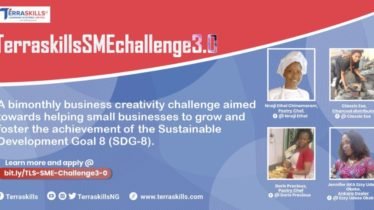How to Find the Right Problem to Solve
Identifying a customer’s pain points is the first step for entrepreneurs in developing a new product.
Julia Austin
As an entrepreneur, how confident are you that you fully understand your customer’s pain points or their job to be done?
Entrepreneurs often tend to start selling their solution before explaining the problem they are trying to solve. There is little evidence that they’ve done true discovery work to validate the problem or their target customers.
While gut feel or personal experience with a problem can be a strong signal there is a problem to solve, without proper product discovery work you won’t truly know if you have a winning solution.
For those who profess having done proper discovery to validate a problem but don’t yet have a product, my follow-up question is: “How do you know people or companies will use your product?”
Answers are equally discouraging. More often than not, I hear examples of interest tests, such as hits on social media posts or answers to surveys that are so biased it’s hard to trust the results. Further, entrepreneurs may have a good hunch there’s a job to be done that needs improving or replacing, but they can’t describe where in the customer journey they can truly make an impact.
I’m a big fan of confident founders who are passionate about their idea, but a little humility and a lot of discovery work can determine whether there’s a winning solution and save a lot of wasted time and money building the wrong thing. If fundraising is also a consideration, being able to have real data vs. gut feelings and biased test results can be the difference between a modest angel round and a strongly led seed- or A-round.
Here are some highlights to product discovery:
1. Interest vs. problem testing
“We had 1,000 clicks on our Facebook ad in the first 48 hours.”
“Our conversion rate from click to sign-up was 50 percent.”
“We interviewed a bunch of people and they said they’d use our product if we built it.”
These quotes suggest the entrepreneurs may have found an audience interested enough to click on an ad and provide an email addresses, but they still haven’t proven anything about the usefulness of their product, that it solves a real pain point, or that their target customer is willing to pay for the fix.
If you plan to do interest tests, here are several approaches (among many) to consider:
a. Social media
Great for finding your audience, social outreach should be done on multiple platforms and carefully crafted to answer only one or two hypotheses. These hypotheses are commonly, “Is this where we can reach this audience if we want to market to them?” and “Are they interested enough to click and learn more?”
b. Website landing pages
These are the best locations to capture interest, email addresses, and demographic data. If your potential customers found you through social media tests or googling, you’ve proven they were interested enough to learn more, that your search engine optimization works, and that they trust you or care enough about the problem you wish to solve that they’ll provide insight into who they are.
c. Surveys
Surveys are difficult to design and often capture random and subjective information instead of getting real data to inform your product. Great surveys are 10 questions or less, reflective in nature (“How many times did you buy “X” in the last month?”) and data-centric (“How often do you order takeout for dinner?).
2. Problem validation
Early in the process, more important than interest tests are tests that validate there is a problem worth solving and where exactly a product can be most successful in solving that problem. Validating hypotheses about the problem through a variety of methods is going to lead to a far better outcome than clicks on a Facebook ad.
Consider trying these different types of problem-validation tests in your discovery process:
a. Interviews
Similar to surveys, interviews are as much art as science. It is incredibly easy to lead a witness, bias answers, and hear what we want to hear in an interview. The best guide for conducting a proper discovery interview is Rob Fitzpatrick’s book The Mom Test, which I encourage every entrepreneur and product manager to read.
b. Ethnography
Observing prospects performing the job you hope to improve or replace can be extremely insightful. You may find hacks they would never tell you about in an interview or discover a whole new set of problems in their process.
c. Emotional journaling or mapping
Having a prospect journal or map out their process and highlight how they feel along the way can pinpoint exactly where they are most frustrated in their process. This is also a great technique if you can’t observe the prospect in the setting where the problem exists.
d. Journey mapping
Bring together all your discovery work to identify where you found patterns of highs and lows. These may surprise you; often, where you hypothesized there was the most pain in a process may be somewhere completely different.
e. (Don’t do) focus groups
I am generally not a fan of this form of discovery. It lends itself to groupthink and can produce false results. Focus groups can be useful later in the product cycle when you want to get reactions to branding or observe groups of people using your product if it’s a tangible item.
3. Prototype testing
The best way to validate that a problem exists is to actually insert yourself into the process and learn by doing. These tests lean toward solution building, but the idea is that you’re doing tests without building anything, or building very little, to get clarity on the problem and the customer.
Common forms of these tests include:
a. Lo-fidelity concierge testing
Jump right in and assume part of the role that your product might fill in the future. If you were coming up with a new restaurant reservation system, this may involve a phone conversation with the party needing a reservation and having you do the actual booking for them, perhaps even texting them to confirm their reservation. The key to success of these early tests is to resist the temptation to correct your customer—just go with them on their user experience. You can tweak things along the way as you learn more about what works and what doesn’t.
b. Wizard of Oz (WoZ) testing
WoZ allows you to test a product without the need for a fully built-out prototype. The customer won’t know that you are working behind the scenes to simulate the experience. A former student of mine with a software engineering background resisted the temptation to code a solution and instead created a WoZ test by cobbling together Soundcloud, Dropbox, texting, and a high-fidelity mock front-end. After dozens of people used this method and she understood what they needed, she officially built and launched the product.
c. Prototypes
Build small runs of your future product using 3D printing, sewing, or even a pop-up restaurant as ways to test your concept and receive feedback before spending too much money.
d. Competitive analogs
Having target customers use existing similar products can be as telling as using the product you hope to create. Try tools like User-Testing, which allows prospects to walk through how they use a current competitive product. Having target customers use a competitive product for a week or two can also be insightful.
e. Expert testing
You may be working in an area where you are no expert, but you have a hunch it’s a white space ripe for disruption. If you don’t have access to the experts or their customers, find or create a space for them to connect and observe through their experiences. This could be as simple as finding them on Quora or Reddit and looking at threads of questions that are related to what you’re exploring.
For this and much more Information relating to employability skills, employment opportunities, career advancement and entrepreneurship development; Join our Telegram and WhatsApp groups, and also follow us on Twitter and Facebook.
Culled from: Harvard Business School.



